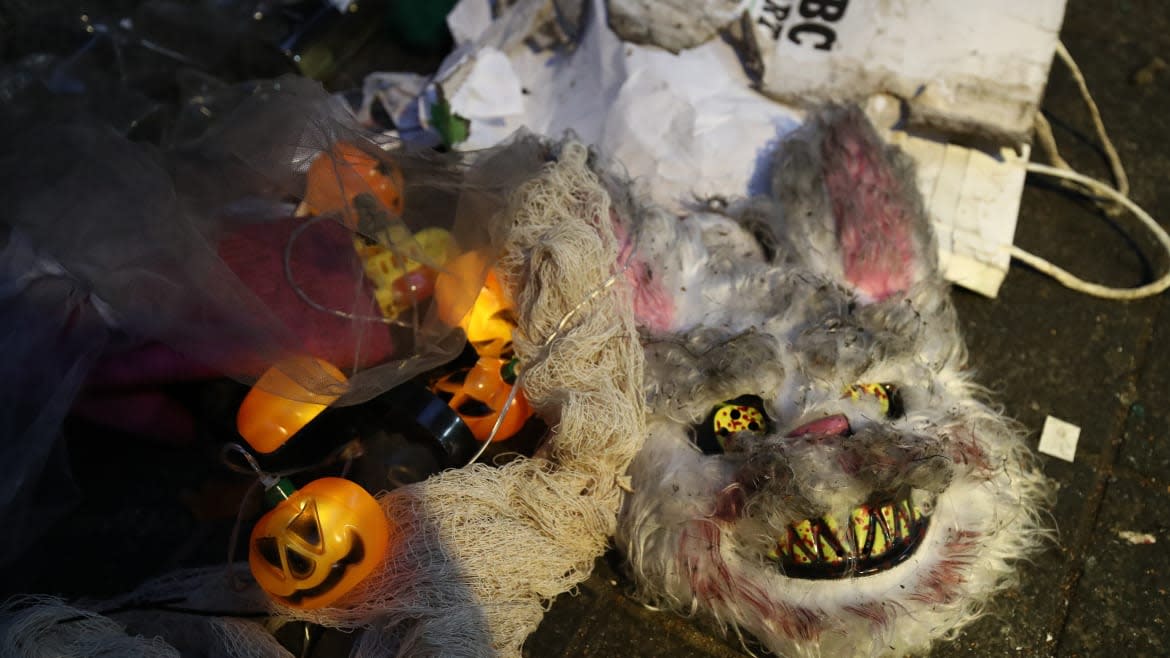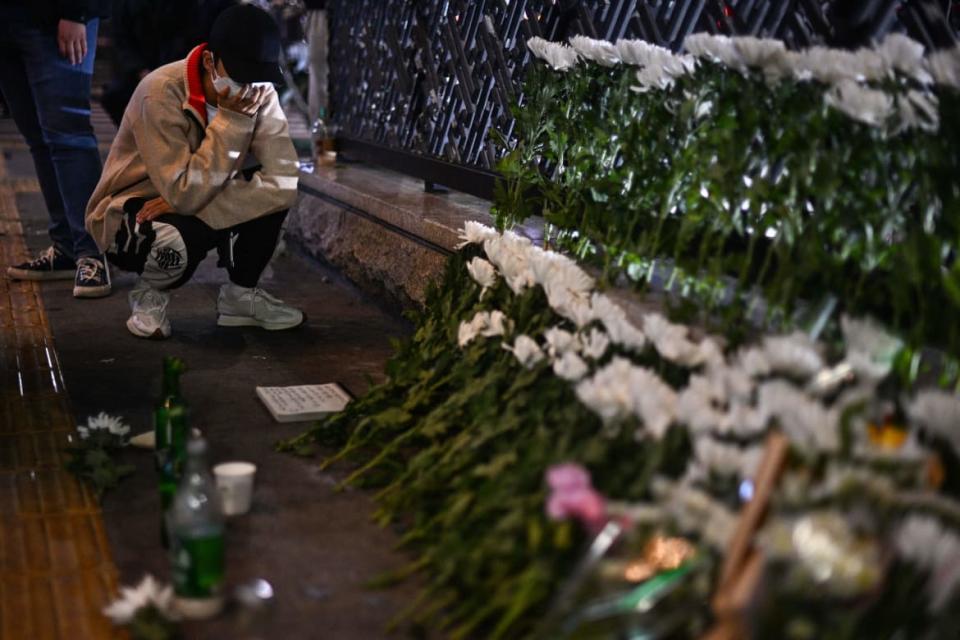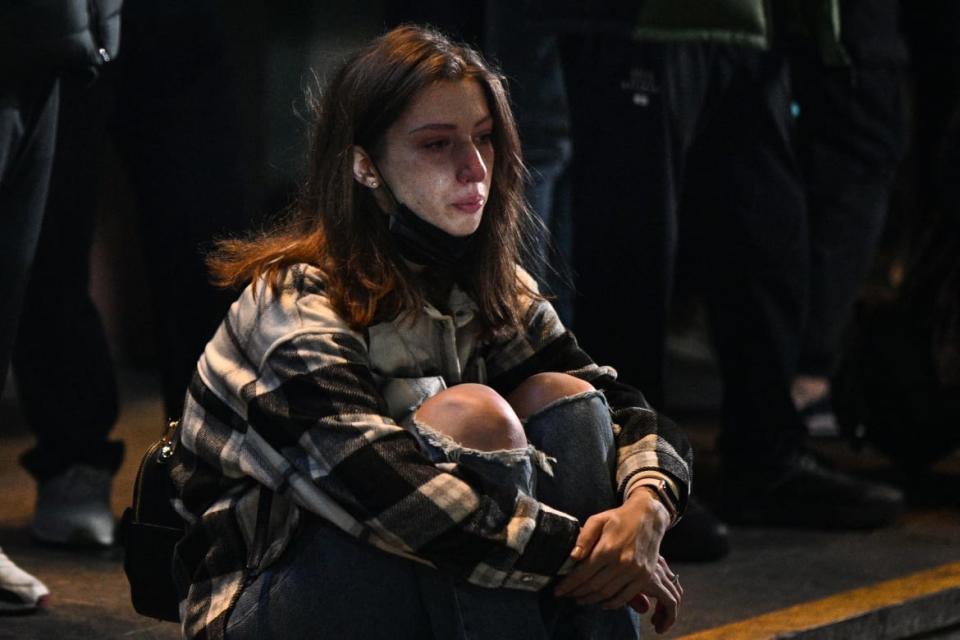How One of Korea’s Most Beloved U.S. Imports Turned into a Total Death Trap

Koreans have taken over from the GI’s who pursued bargirls up and down Hooker Hill in the Itaeswon district of Seoul where a flower shop once offered prostitutes behind the flowers.
The evolution of Itaewon, near the former headquarters of all U.S. forces in Korea, from a notorious military camptown was never so apparent as this weekend when 100,000 partying people, many in holiday costumes, crowded narrow alleys lined with restaurants, shops and bars until finally there was no room for all of them to breathe.
Death Toll Tops 150 in Korean Halloween Nightmare
By dawn the death toll had reached 153 with 133 injured, including 18 critically and struggling to survive. The dead, mostly in their 20s, several teenagers, included 97 women, said Yonhap, the South Korean news agency, due “mainly to their relatively small frame” and “heavier Halloween costumes.” Reports had 20 or 22 foreigners among the dead, including two Americans the U.S. embassy said. Four Chinese, three Russians and others from the France, Australia, Vietnam, Uzbekistan, Norway, Kazakhstan, Sri Lanka, Thailand and Austria also reportedly died.
Most of the victims were caught in a narrow alley running up a small slope from the main drag in Itaewon to a back street famed for restaurants and nightclubs featuring cuisine ranging from American burgers to delicacies from a dozen countries.
They apparently had crowded the alley to get away from the fast-gathering crowds above and below them. The sense of impending tragedy grew as police and fire officials got word that people were collapsing, many not moving, and ambulances began rushing them to nearby hospitals and clinics.

A man reacts as he squats next to a makeshift memorial outside the Itaewon subway station in the district of Itaewon in Seoul on October 30, 2022, the day after a Halloween stampede in the area.
With the GI’s now largely based outside Seoul, no one is scapegoating the Americans for the Halloween crush. President Biden sent “deepest condolences to the families who lost loved ones” and “best wishes for a speedy recovery” of the injured. “Our alliance is strong and part of that is because of the way the Itaewon community has opened its arms to us over the years,” said the U.S. and UN commands, offering thoughts and prayers for all of the families” of the victims.
The district still retains a foreign aura, but the tawdry atmosphere of the old days when Koreans not only scorned Itaewon but staged regular anti-American protests outside the nearby sprawling American base known as Yongsan, the ward where it was located, has vanished.
“It’s an historic place and attracts a lot of tourists,” said Sung-eun Kim, a manager in a nearby tourist office. “Young people, artists, gather here. It’s known for great exotic restaurants. Shops sell fine products, not fake Gucci bags.”
It was that milieu that attracted visitors from throughout Korea, and foreign countries too, filling hotels and bars for what promised to be a few hours of carousing and shopping before the revelry turned to screams and a stampede in which scores were trampled underfoot or simply unable to move.
On Sunday, the Korean government declared Itaewon a disaster area, closing it to visitors for a week, the U.S. command told American soldiers and civilian workers who didn’t live there to stay out, and the American embassy issued an ominous “Security Alert”: “Avoid the area. If you were in the area, please contact your family and friends to let them know you are OK.”
“Halloween is not a big Korean holiday but an international one,” said Lynn Turk, a retired senior diplomat formerly with the American embassy in Seoul. “So the first Halloween in three years meant—go to the international entertainment district, Itaewon. Too many got the message. “
The tragedy, marking a Halloween tradition introduced by the Americans, offered a stark reminder of the legacy of history.
“It’s still a foreigners’ area,” said Christian Daryl, a former marine now working for an American company at Camp Humphreys, the huge base to which the headquarters of U.S. forces Korea retreated several years ago from its sprawling base a few minutes’ walk from Itaewon. “The Americans are out of there,” he said, but Itaewon “is perceived as for foreigners”—just not American soldiers.
How was it that Itaewon made the transition from a widely scorned GI district into a trendy young Koreans’ playground—and what does that say about life in ever-changing Seoul, years ago a somewhat backward second-tier capital, now a sophisticated center of culture and fashion?

A woman reacts outside the Itaewon subway station in the district of Itaewon in Seoul on October 30, 2022, the day after a Halloween stampede in the area. - More than 150 people were killed in a stampede at a Halloween event in central Seoul.
“Itaewon changed dramatically—and on purpose—during and after the 1988 Olympics,” said Lynn Turk. “Before, the main business was GI traffic and the few foreigners in Seoul. The Korean government planned to use the Olympics to upgrade the district. They went through and rated every store and, for example, their toilet facilities, and ordered upgrades to ‘Western’ standards.”
The result, he said, was that “prices and infrastructure jumped before and after the Olympics and the GI stuff faded and trendy took over.” It was then that “upscale restaurants, nightclubs not aimed at GIs, exclusive stores and upscale apartments abound. The subway came in eventually so the area could be reached directly.”
The development of Itaewon over the last 30 years, “like the rest of Korea, has been rapid and complete,” said Steve Tharp, a retired army officer who’s made Korea his home. “It little resembles the place I remember from 30 years ago.”
In the old days Itaewon was “still largely dependent on its identity as a GI camptown,” he reminded this correspondent, who had arrived several years earlier. “That identity included lots of daytime shopping and U.S.-focused restaurants and pub-type bars as well as the seedier bars and prostitutes.”
The scene began to shift, he said, when the U.S. military “changed its regulations to make prostitution illegal (for GI’s) in 2004.” Then the LGBT community, once almost entirely hidden, moved in, a slope near Hooker Hill was dubbed “Gay Hill” and a club named Trans Rose opened.
Around that time, the Sportsman’s Club on Itaewon’s main drag, once regarded as one of the greatest pickup joints in Asia, for prostitutes as well as women just looking for fun with foreigners, shut down, morphing into a gaudy hostess bar. Prices soon soared far above the means of the average GI, and the hookers who once beckoned at the base of Hooker Hill looked elsewhere for work.
Meanwhile, said Tharp, “Fewer GIs came to Itaewon as nearby neighborhoods focused more on western bars and food.”
It was after the United Nations Command and U.S. Forces Korea headquarters moved to Camp Humphreys, the largest U.S. base in the world, about 40 miles south of Seoul, that Itaewon changed even more. Over the past few years it’s become a popular gathering site for younger Koreans,” said Tharp, until today it’s “almost unrecognizable to its clientele of 30 years ago.”
Get the Daily Beast's biggest scoops and scandals delivered right to your inbox. Sign up now.
Stay informed and gain unlimited access to the Daily Beast's unmatched reporting. Subscribe now.

